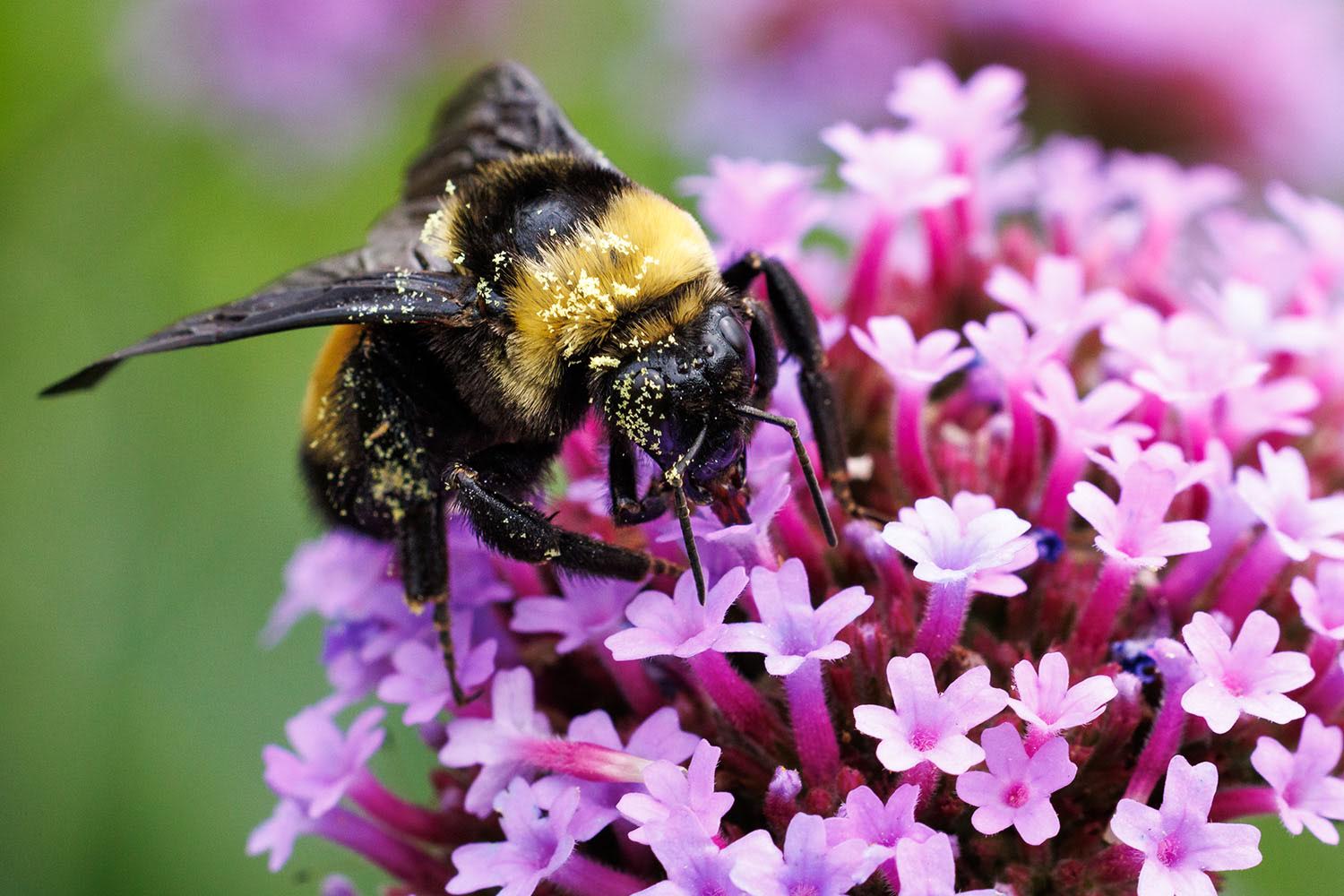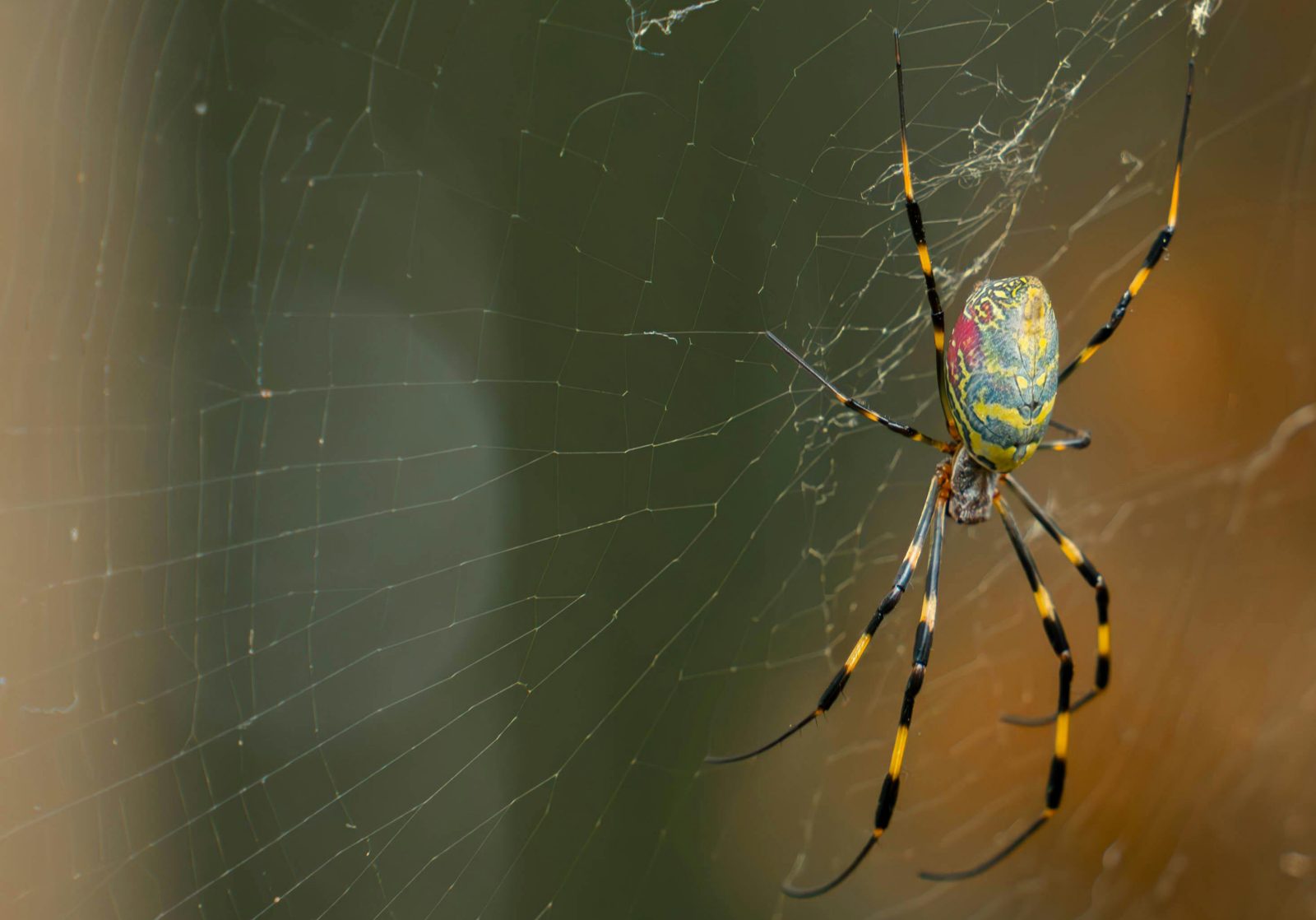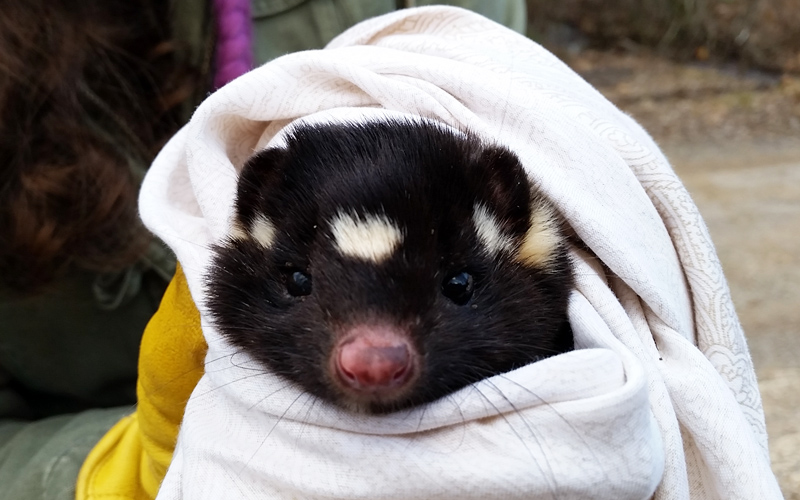
15 Life on Land (152)
Protect, restore and promote sustainable use of terrestrial ecosystems, sustainably manage forests, combat desertification, and halt and reverse land degradation and halt biodiversity loss
Bruderhof manufactures sustainable community in Monroe County
Written by C. Don Jones Hiwassee Bruderhof builds vermicomposting equipment at its manufacturing facility on the grounds of what was Hiwassee College in Monroe County, Tennessee. Hiwassee Products
Hiwassee Bruderhof builds vermicomposting equipment at its manufacturing facility on the grounds of what was Hiwassee College in Monroe County, Tennessee. Hiwassee Products
Intentional Christian community settles into old Hiwassee College campus
HIWASSEE — We gathered in the old Hiwassee College theater to see “Common Ground” and hear from one of the farmers featured in the film.
Members of the new Bruderhof (from the German word, a place of brothers) community in Monroe County sat with us for the screening.
A few folks asked me: “Are you a farmer?”
“No, I am a United Methodist pastor,” I replied. The community is on the old Hiwassee College campus. The Holston Conference closed the college in 2019 and then sold the property to the Bruderhof in 2021
One older gentleman said, “I hoped to sit with a farmer.” I understood that. The community, in addition to being a self-supporting Christian Intentional Community, hoped to sell some of its new equipment to local farmers. Hobby gardeners, like me, would not want to invest the money in the new tools being offered.
Science takes wing at 2024 Ijams Hummingbird Festival
 Certified master bander Mark Armstrong tends gently to a tufted titmouse shortly before turning his attention to a hummingbird at the 2021 Ijams Hummingbird Festival, set this year for Aug. 17. Thomas Fraser/Hellbender Press
Certified master bander Mark Armstrong tends gently to a tufted titmouse shortly before turning his attention to a hummingbird at the 2021 Ijams Hummingbird Festival, set this year for Aug. 17. Thomas Fraser/Hellbender Press
KNOXVILLE — Ijams Nature Center’s 14th annual Ijams Hummingbird Festival: A Celebration of Wings will bring back its popular marketplace and add new activities to its offerings from 7 a.m. to 1 p.m. Aug. 17.
A general admission ticket provides access to educational booths and activities, dip netting, live animal encounters, and a kids’ nature zone where children and families can create arts projects and crafts, conduct experiments, and more. Community science opportunities, guided nature walks, and new hands-on workshops also will be offered.
General admission tickets are $12 for adults (ages 13+) and $9 for children ages 3-12. Children under 3 are free. Ijams Nature Center members receive a 10 percent discount on the festival ticket price.
This year’s festival also brings back the marketplace, featuring handcrafted art, nature-themed items, local plants, and garden décor, as well as speaker sessions.
Attendees can choose to schedule a bird-banding demonstration for an additional charge. Each small group will get the opportunity for an up-close look at a hummingbird or another bird in a small-group setting with master bander Mark Armstrong. He will weigh, measure, band, and talk about the birds before allowing one person in each group to release the bird.
Bird banding demonstrations are offered in 30-minute sessions starting at 7 a.m.; the last appointment is 12 p.m. Your best chance to see a ruby-throated hummingbird being banded is during the earlier appointments.
The 14th annual Ijams Hummingbird Festival: A Celebration of Wings is sponsored by Accenture, HomeTrust Bank, Stanley’s Greenhouse, Tennessee Wildlife Federation, and Wild Birds Unlimited Maryville.
Before FDR, the artists and the auto dealers: How Knoxville influenced early days of Great Smokies park campaign
Written by Thomas Fraser The photos of the Thompson Brothers, namely Jim Thompson, helped galvanize support for the establishment of Great Smoky Mountains National Park along the Tennessee-North Carolina border. The photo is undated, but was likely taken in the 1930s. The original caption note from the photographer reads: “Most of the streams in the Great Smokies are entirely safe for drinking purposes. The water flows from deep-shaded mountain sides, free from human contamination, and it is well aerated as it dashes wildly down the steep mountain sides. Even during the hottest days of summer, the water is so cold that it will cause one’s hands to ache if held in the water for a few minutes.” University of Tennessee Libraries/Thompson Brothers Collection
The photos of the Thompson Brothers, namely Jim Thompson, helped galvanize support for the establishment of Great Smoky Mountains National Park along the Tennessee-North Carolina border. The photo is undated, but was likely taken in the 1930s. The original caption note from the photographer reads: “Most of the streams in the Great Smokies are entirely safe for drinking purposes. The water flows from deep-shaded mountain sides, free from human contamination, and it is well aerated as it dashes wildly down the steep mountain sides. Even during the hottest days of summer, the water is so cold that it will cause one’s hands to ache if held in the water for a few minutes.” University of Tennessee Libraries/Thompson Brothers Collection
Knoxville History Project observes 100th anniversary of a key meeting and month in Great Smoky Mountains history
KNOXVILLE — Parts of the mountains were broken, but it was all beautiful, and many artists and writers long took careful note of the rugged, remote rainforest to the southeast of the city.
Decades before modern scientific endeavors like the All Taxa Biodiversity Inventory began documenting the wondrous, mountainous biodiversity of what was to become Great Smoky Mountains National Park, photographers, writers, journalists, naturalists and artists, including many from Knoxville, extolled the virtues of the relatively lofty blue-green mountains seen in silhouette from the city.
Much of the land was scarred by logging and erosion; much was not, and its beauty, frozen in a frame or penned to a page, spoke for itself through countless artists.
Their early 20th-century renderings of the Smokies, from prose to photographs, amazed critical federal officials and the public and helped close the complex deal on what is now the most visited national park in the United States.
The Knoxville History Project is offering a series of events and symposium set for July 25-27, centered around the East Tennessee History Center on Gay Street, that will recognize the varied efforts of historical Knoxvillians to boost the concept of the national park through multimedia arts, science and journalism.
- tennessee archive of moving image & sound
- great smoky mountains conservation association
- great smoky mountains national park
- jim thompson
- sept 2, 1940
- all taxa biodiversity inventory
- knoxville history project
- east tennessee history center
- smokies national park campaign
- smokies history
- birth of a national park in the smokies
- eric dawson
- stark love
- central cinema
- bijou theater
- mcclung historical collection
- jack neely
- dedication of great smoky mountains national park
- when did smokies open?
- wbir
- carlos campbell
- ijams nature center
- franklin d roosevelt
- alum cave
- mt leconte
- mountain view hotel
Not just a bougie supper club: Slow Food returns, patiently, to mountains
Written by Élan Young Slow Food Tennessee Valley co-founder Sarah Bush picks heirloom tomatoes at Vuck Farm in Riceville. Élan Young/Hellbender Press
Slow Food Tennessee Valley co-founder Sarah Bush picks heirloom tomatoes at Vuck Farm in Riceville. Élan Young/Hellbender Press
Slow Food ramps up regional food resilience efforts
RICEVILLE — On a hot summer day in late June, Sarah Bush, co-founder of Slow Food Tennessee Valley, slices some varieties of tender heirloom tomatoes freshly picked from tall rows of plants strung up in a giant, covered hoop-style greenhouse before serving them on a cutting board with a bit of farm-fresh chevre and basil.
The tomatoes span hues of yellow, red, green and purple, some a solid color or slightly striped and bearing intriguing names not found in grocery stores: striped Heart, Cherokee evergreen, chocolate stripe and Valencia. The flavor combinations explode into farm-to-table bliss.
The tomatoes are especially terrific for a reason: Bush, 46, has practiced regenerative farming since she was 28.
Mentored by other small farmers around the country who taught her how to exist and thrive in an economy that favors Big Ag, she now splits her time between Vuck Farm, a biodynamic farm in Riceville owned by her partner TJ Teets, and managing the produce department at Three Rivers Market in Knoxville — Tennessee’s only cooperative grocery.
She also serves on the planning committee for CRAFT (Collaborative Regional Alliance for Farmer Training), which is run by the Southeastern Tennessee chapter of the National Young Farmers Coalition.
Not a bougie supper club
Founded in 2008, the Tennessee Valley chapter of Slow Food is the only chapter in the state that has remained active since its founding.
A little more than two decades earlier in 1986, thousands of Italians gathered at the base of the sprawling Piazza di Spagna in the center of Rome to protest the country’s first McDonald’s restaurant. Slow Food’s founder, Italian journalist Carlo Petrini, was among them. Instead of bringing a sign with a slogan, Petrini brought a big bowl of penne pasta to share with the crowd chanting We don’t want fast food. We want Slow Food! Three years later the movement became an official organization and today spans 160 countries.
- three rivers market
- collaborative regional alliance for farmer training
- vuck farm
- national young farmers coalition
- alice waters
- wendell berry
- slow food
- tennessee agriculture enhancement program
- terra madre
- slow food of tennessee valley
- sarah bush
- old city garden
- jim embry
- university of tennessee institute of agriculture
- pesto festo
- ark of taste
- tj teets
- riceville
- small farmer
- farmland loss
- young farmer
- regenerative farming
DOE agrees to $42m in Oak Ridge environmental reparations
Written by Department of Energy Moviegoers are seen outside a postwar screening of a film at Grove Theater chronicling Oak Ridge’s role in the development of nuclear weapons and energy. Department of Energy Photograph Collection/Oak Ridge Public Library
Moviegoers are seen outside a postwar screening of a film at Grove Theater chronicling Oak Ridge’s role in the development of nuclear weapons and energy. Department of Energy Photograph Collection/Oak Ridge Public Library
Public/private grants will fund natural resource preservation and enhancement in East Tennessee
OAK RIDGE — The U.S. Department of Energy signed a $42 million agreement as part of the Natural Resources Damage Assessment and Restoration (NRDAR) process for impacts from its historic operations on the Oak Ridge Reservation.
Contamination released from the Oak Ridge Reservation negatively impacted natural resources and services depending on those resources in the region. The goal of the NRDAR process is to restore natural resources and replace natural resource services equivalent to what was lost.
A trustee council comprised of representatives from the state of Tennessee through the Tennessee Department of Environment and Conservation (TDEC) as the lead state agency, U.S. Fish and Wildlife Service, Tennessee Valley Authority and DOE evaluated how natural resources were injured and developed a Restoration and Compensation Determination Plan. That document was finalized in December 2022 after accepting public comments.
All funds from the $42 million agreement will be deposited into an account held by the state to fund grants to organizations and public entities for a wide range of local projects that either enhance the area’s natural resources or provide nature and recreational opportunities.
 Katheryn Albrecht holds a juvenile American kestrel just prior to releasing it into the Wildwood area of Blount County as part of the Farmland Raptor Project. Thomas Fraseer/Hellbender Press
Katheryn Albrecht holds a juvenile American kestrel just prior to releasing it into the Wildwood area of Blount County as part of the Farmland Raptor Project. Thomas Fraseer/Hellbender Press
Farmland Raptor Project takes wing to expand raptor populations on private properties
WILDWOOD — She felt the bird in her hand in her heart as the kestrel strained toward freedom.
Elise Eustace, communications director for Foothills Land Conservancy, blessed the bird and let it go, free to make a home somewhere on the 300-acre Andy Harris Farm or elsewhere in the Wildwood area of Blount County. “I’ve never gotten to do something like this,” she said. “So exciting.”
Two other juvenile kestrels joined their kin on the warm summer afternoon, lighting into nearby oaks and atop a telephone line above the red and yellow pollinator gardens and dry pasture and cornfield and copses that punctuate the property in the shadow of smoky knobs that rise gradually to the Smokies crest beyond the blue-green hollows of the Little River watershed. Resident sparrows, bluebirds and kingbirds voiced displeasure at the new arrivals.
Seeking the musical saw-whet, drawn to Smokies by space and time
Written by Rob Hunter Though seldom seen, the toot-toot tunes of the northern saw-whet owl are signs of late spring in the high peaks of Southern Appalachia. Rob Hunter/Hellbender Press
Though seldom seen, the toot-toot tunes of the northern saw-whet owl are signs of late spring in the high peaks of Southern Appalachia. Rob Hunter/Hellbender Press
Though not on any formal breeding list, nocturnal nomads bring spring tunes to high Smokies
GATLINBURG — It’s a May evening and I’m standing at a pull-off on Clingmans Dome Road in Great Smoky Mountains National Park. My breathing is light as I close my eyes and listen intently for a singular sound on the crisp night air. I hold absolutely still to keep my heavy coat from rustling. The coat is necessary on nights at this elevation, even as Memorial Day approaches.
This is not my first stop along the road tonight and my patience is beginning to wane. Just as I decide to turn back toward the car, the sound I’m seeking reaches my ears.
Toot-toot-toot-toot-toot-toot-toot-…
 Saw-whet owls are not officially listed as Smokies breeders, but a wealth of anecdotal evidence suggests otherwise. Tennessee Wildlife Resources Agency
Saw-whet owls are not officially listed as Smokies breeders, but a wealth of anecdotal evidence suggests otherwise. Tennessee Wildlife Resources Agency
Updated: Feds agree to reconsider ESA status of big, elusive salamander known only in Knox County area
Written by JJ Stambaugh The limestone cliffs and bluffs of Ijams Nature Center are home to the Berry Cave salamander. The cave is very hard to find, is gated, and entry is forbidden to protect both the salamander and bat populations. Thomas Fraser/Hellbender Press
The limestone cliffs and bluffs of Ijams Nature Center are home to the Berry Cave salamander. The cave is very hard to find, is gated, and entry is forbidden to protect both the salamander and bat populations. Thomas Fraser/Hellbender Press
Lawsuit prompts federal agency to reconsider protections for rare East Tennessee salamander
KNOXVILLE — The Southern Environmental Law Center, which championed the conservation of a salamander found only in a series of caves within the Knoxville Metropolitan Area, announced Jan. 16 that the U.S. Fish and Wildlife Service agreed to reconsider inclusion of the Berry Cave salamander on the Endangered Species List.
The release from SELC follows; the original story published in July 2024 continues below.
“The Southern Environmental Law Center, on behalf of the Center for Biological Diversity, reached an agreement with the U.S. Fish and Wildlife Service that requires the agency to reconsider listing the Berry Cave salamander—a rare salamander that is only found in a handful of East Tennessee caves—as an endangered species.
The already rare salamanders are under immense pressure from sprawling development in the region, and even the largest observed populations of the Berry Cave salamander are quickly declining. Survey results indicate that a population found in Knoxville’s Meads Quarry Cave—historically one of the salamander’s relative strongholds—fell by 65 percent between 2004 and 2019.
Thursday’s agreement comes eight months after the conservation groups sued the Service, arguing that the agency violated federal law when it denied Endangered Species Act protections for the Berry Cave salamander in 2019. The surprising denial came at a time when the agency’s regional leadership had directed staff to implement a quota system that set annual targets for denying species protections—a system that may have inappropriately influenced the Berry Cave salamander decision.
The agreement requires the agency to reevaluate the Berry Cave salamander’s status and determine by August 2029 whether it should be listed for protection under the Endangered Species Act.
“This agreement is an important step toward securing long-overdue protections for the Berry Cave salamander and correcting a harmful mistake from the Fish and Wildlife Service,” said Liz Rasheed, a staff attorney at the Southern Environmental Law Center. “We hope the agency will follow the science — as required by law — and give these one-of-a-kind salamanders the protections they need to have a shot at survival.”
- center for biological diversity
- endangered and threatened species
- berry cave salamander
- john nolt
- foundation for global sustainability
- ijams nature center
- limestone caves
- knox county caves
- endangered species act
- mead’s quarry
- gyrinophilus gulolineatus
- james white parkway extension
- southern environmental law center
- salamanders
- cavedwelling amphibians
- southern appalachian salamanders
- environmental ethics
- esa lawsuit
- east tennessee endangered species
- hayworth hollow
 A recent display of synchronous fireflies (Photinus carolinus) in the Smokies. Abbott Nature Photography
A recent display of synchronous fireflies (Photinus carolinus) in the Smokies. Abbott Nature Photography
Thousands of visitors view annual firefly spectacles in Smokies area as natural light show dims elsewhere
ELKMONT — Anyone who has fallen in love knows reading a love poem is no substitute for direct experience. Similarly, no technology, no art form, nor any reportage can come close to the mesmerizing firsthand experience of witnessing hundreds of thousands of synchronous firefly beetles pulsing in the dark during the peak of their mating period in Great Smoky Mountains National Park.
Over the last 20 years, throngs of eager visitors have trekked by the thousands to catch this rare glimpse of collective insect behavior. The crowds posed problems: Since females and larvae of the species are on and under the ground, visitors can trample them if they stray off trail. Likewise, flashlights and other white lights, including from cell phone screens, can also disrupt courtship.
The firefly phenomenon caught fire in 1991, when Lynn Faust read an article suggesting that no synchronous fireflies lived in the western hemisphere, yet she knew that’s what she witnessed in the 1960s at the historic Elkmont community when she vacationed there with her in-laws. After she brought Photinus carolinus to the attention of scientists, word spread and new firefly pilgrimages to Elkmont were born.
- fireflies in smokies
- elkmont fireflies
- firefly tourism
- photinus carolinus
- elan young
- discover life in america
- becky nichols entomologist
- walk in the woods
- dancing bear townsend
- firefly hikes
- firefly camping
- grandfather mountain fireflies
- smoky mountain guides
- norton creek
- firefly habitat
- how can i attract fireflies
- all taxa biodiversity inventory
- bioluminescense
- synchronous fireflies
City-based projects are pollinating the planet
Written by Molly McCluskey A parklet in Washington DC with brightly colored planters filled with local pollinator plants. Molly McCluskey
A parklet in Washington DC with brightly colored planters filled with local pollinator plants. Molly McCluskey
From pocket parks to large-scale projects, cities around the world are working to reverse a troubling trend.
This story was originally published by The Revelator.
Every June, cities around the globe celebrate Pollinator Week (this year, June 16-22) an international event to raise awareness about the important roles that birds, bats, bees, butterflies, beetles and other small animals serve in pollinating our food systems and landscapes. These crucial species are declining worldwide, with many on the brink of extinction.
Cities have responded to this crisis with a variety of urban initiatives designed to foster pollinator habitats and in the process transform once-stark cement landscapes — as well as pocket parks, curb strips and highway dividers — into lush, welcoming areas for pollinators and humans alike.
In Washington, D.C., ambitious pollinator projects are abundant on rooftops of public, office and private spaces, ranging from the renovated D.C. Public Library’s main branch to National Public Radio’s headquarters, which hosts an apiary. Throughout the District of Columbia, municipal code requires buildings to maintain the tree boxes and curb strips outside their properties. This often leads to creative landscaping on the smallest of scales.
More...
 A bumble bee (Bombus sp.) collects pollen from purpletop vervain (Verbena bonariensis) in a pollinator plot on the Tennessee Aquarium plaza in Chattanooga. Tennessee Aquarium
A bumble bee (Bombus sp.) collects pollen from purpletop vervain (Verbena bonariensis) in a pollinator plot on the Tennessee Aquarium plaza in Chattanooga. Tennessee Aquarium
Aquarium celebrates Pollinator Week with activities and giveaways June 17-23
Doug Strickland is a writer for the Tennessee Aquarium.
CHATTANOOGA — Pollinators. They’re kind of a big deal.
From iconic monarch butterflies and humble honey bees to fast-flying hummingbirds and acrobatic ... lemurs?! ... the animals that help plants reproduce are collectively known as “pollinators.” Whether intentional or accidental, the actions of pollen-transporting species contribute tremendously to the health of their respective ecosystems and are responsible for a shocking amount of the food we eat.
The benefits of the human-pollinator relationship are a two-way street. According to the Pollinator Partnership, a nonprofit dedicated to raising awareness about the role pollinators play, pollinators are responsible for roughly one of every three bites of food we eat and propagate over 180,000 different plant species — including more than 1,200 food crops.
 Joro (pronounced “Joe-row”) spiders have made their way to the U.S. from Asia. They may appear intimidating, and can bite like most spiders, but are harmless when left alone. Pexels via Virginia Tech
Joro (pronounced “Joe-row”) spiders have made their way to the U.S. from Asia. They may appear intimidating, and can bite like most spiders, but are harmless when left alone. Pexels via Virginia Tech
Newest invasive exotic spider is harmless, though it doesn’t belong here
Theresa “Tree” Dellinger is a diagnostician at the Insect Identification Lab in the Department of Entomology at Virginia Tech, where she identifies insects and other arthropods and provides management suggestions for insect-related problems. This article was provided by Virginia Tech.
BLACKSBURG — The large, brightly colored Joro spider has been sighted recently on social media in many more places than it has ever been seen in the United States, as exaggerated, misleading stories about the arachnid have gone viral. Yet they pose no threat, except perhaps to insects and to other spiders.
“Joro spiders will likely continue to spread in the U.S., but they aren’t the ‘flying venomous spider invasion’ that’s been sensationalized in the media,” said Virginia Tech entomologist Theresa Dellinger. Answering the questions below, she shared facts about this much maligned spider species.
Q: Where do Joro spiders come from?
“Joro spiders (Trichonephila clavata) are native to east Asia and can be found in Japan, Korea, China, Indochina and Nepal. First reported in northern Georgia in 2014, they are an invasive species of spider that likely entered the U.S. on materials imported from east Asia.”
Stripes and spots: A tale of two Southern Appalachian skunks
Written by Matt Dhillon An eastern spotted skunk is seen in its signature defensive handstand. If the stance doesn’t deter predators it will let loose a caustic and malodorous spray akin to mace. Agnieszka Bacal via Virginia Department of Wildlife Resources
An eastern spotted skunk is seen in its signature defensive handstand. If the stance doesn’t deter predators it will let loose a caustic and malodorous spray akin to mace. Agnieszka Bacal via Virginia Department of Wildlife Resources
Striped skunks thrive as spotted cousins decline
This story was originally published by The Appalachian Voice.
BOONE — A characteristic white stripe on a black pelt is an instant warning to tread gently.
Nature’s stink bomb, the striped skunk (Mephitis mephitis) carries this distinctive mark on its back. But Appalachia has a second variety of this master of malodor, marked instead by a blotchy pattern of black and white fur.
The eastern spotted skunk (Spilogale putorius), was not always as rare as it is today. Decades ago, it was relatively common for trappers to catch the polecat, as it’s also known, for its pelt. But spotted skunk populations crashed between 1940 and 1970, according to a landmark paper from the University of Missouri looking at harvest data from trappers. By the 1980s, the study found, harvest numbers had plummeted by 99 percent, reflecting a steep decline in the skunk’s population.
Meanwhile, the spotted skunk’s striped cousin has thrived throughout the United States. So why have their populations diverged so drastically?
 A spotted skunk trapped as part of Emily Thorne’s Virginia Tech study of the animals. Emily Thorne
A spotted skunk trapped as part of Emily Thorne’s Virginia Tech study of the animals. Emily Thorne
Follow some protocols during No-Mow May or risk the sting of a city codes violation
Written by Thomas Fraser Gerry Moll is seen in the native garden of his home in the 4th and Gill neighborhood of Knoxville in this file photo. Moll tends to his natural habitat in keeping with city codes protocols. Ben Pounds/Hellbender Press
Gerry Moll is seen in the native garden of his home in the 4th and Gill neighborhood of Knoxville in this file photo. Moll tends to his natural habitat in keeping with city codes protocols. Ben Pounds/Hellbender Press
City: Overgrown lots don’t automatically qualify as wildlife habitat
KNOXVILLE — City government wants people to know that though “No Mow May” is a worthy observation there are still some protocols residents have to follow to avoid codes violations and potential fines.
The month of May is hyped as a prime time to refrain from cutting your grass or portions of your lawn to allow pollinating plants and the pollinators they support to get six legs up late spring and early summer nectar season. It’s also an occasion to consider the fact that traditional lawns are largely ecological deserts.
“No Mow May” is a quick and catchy name for a movement that aims far beyond not mowing the yard for a month,” according to Bee City USA, a proponent of keeping your yard real and wild when and where it is practical.
“It’s more than long grass and dandelion blooms. It’s a gateway to understanding how we share our lawns with many small creatures.”
It goes beyond bees and butterflies and other pollinating insects. Many ground-nesting birds are on the decline due to loss of grassy habitat. Native grasses also serve as habitat for small mammals such as rabbits and mice, which in turn provide a buffet for raptors such as owls, hawks and eagles.
Hellbender Press has reported on cultivation of such natural landscapes and habitats within the city limits. Groups such as the Native Plant Rescue Squad can also provide plants and guidance.